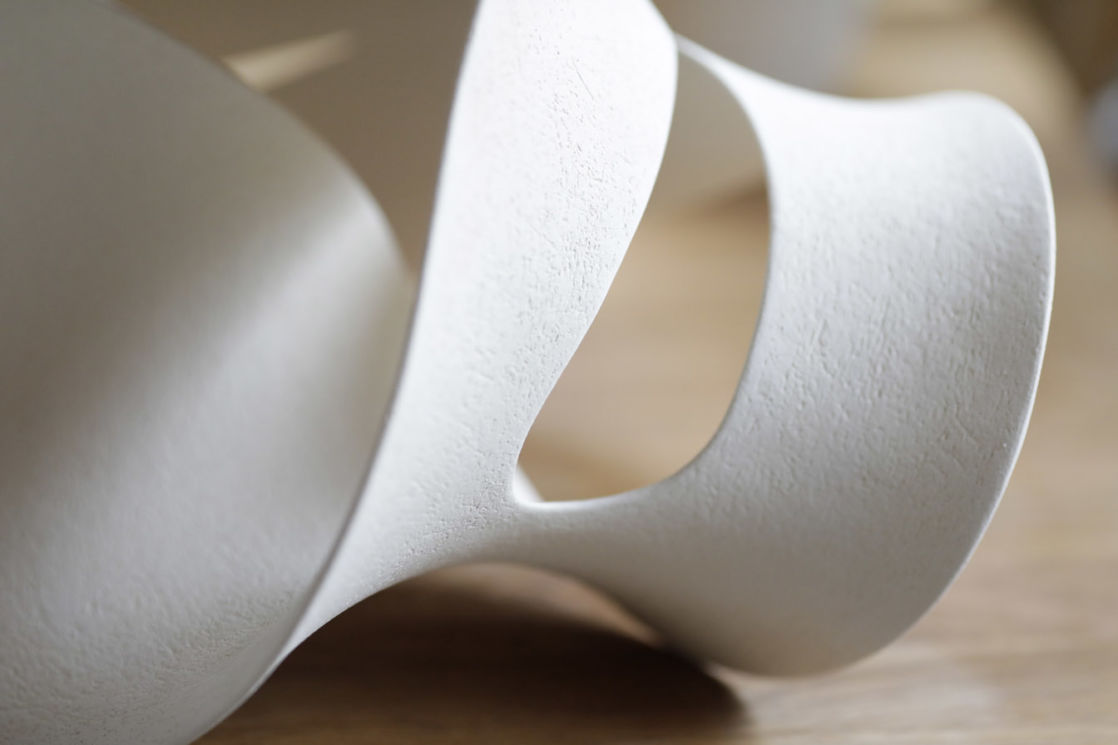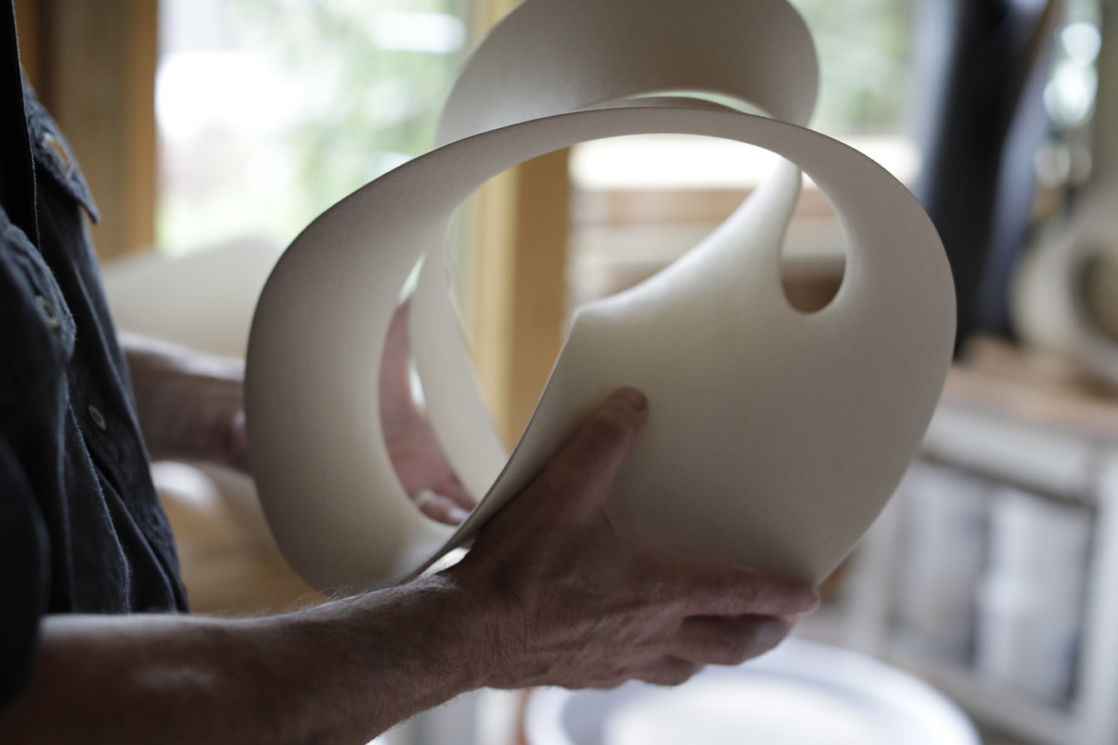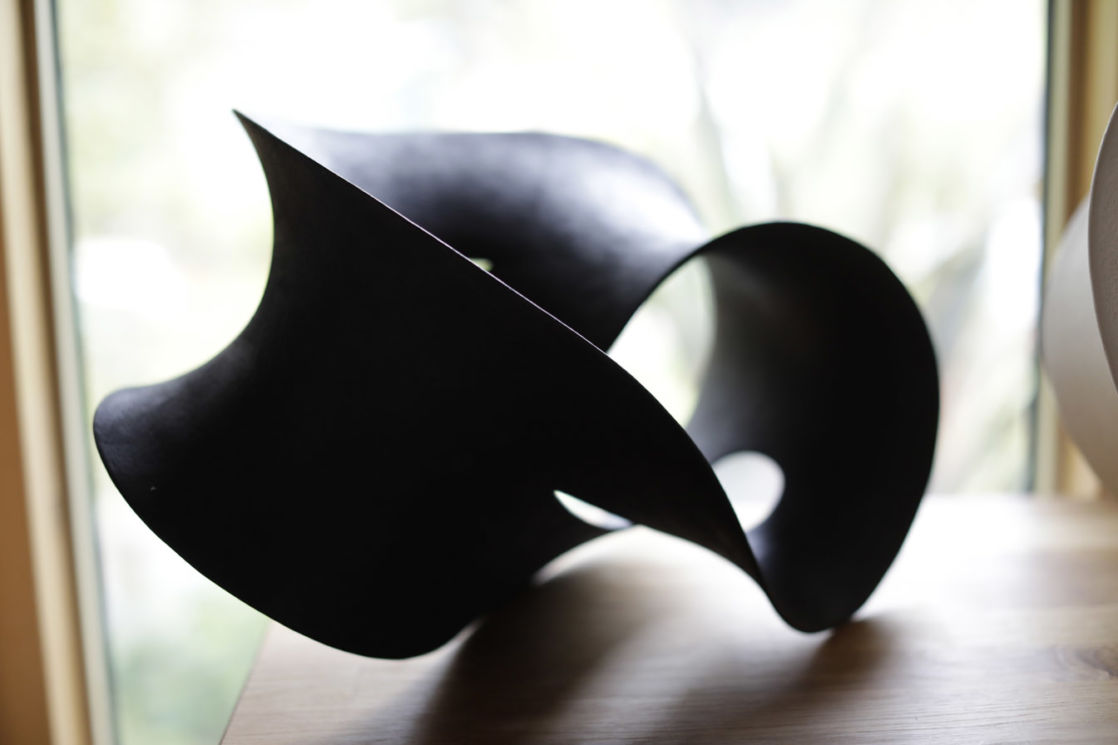Welcome to Ceramic Review
Ceramic Review is the magazine for contemporary and historical ceramics, ceramic art and pottery.
Ceramic Review Issue 334
July/August 2025
Ceramic Review is the magazine for contemporary and historical ceramics, ceramic art and pottery.
July/August 2025
In this video, Ceramist Adrian Bates takes us step-by-step through the processes he uses to create one of his organic Möbius deconstructed forms. Discover how Adrian makes and fires his work in the full step-by-step masterclass inside CR 301 (January/February 2020)
With a background in graphics and teaching, working with ceramics might have been seen as an afterthought, but in fact it has become what I think of as my first ‘proper’ career. In 2000, I decided to take a pottery evening class – mostly as an antidote to the frustrations of my day job in graphics, but once I’d started, I was blown away by the experience. For the first time since leaving school (where there was a lot of art and craft) I reconnected with my hands creatively and began a process that has become central to my life.
I was diagnosed with Chronic Fatigue Syndrome in 2002, which forced me to re-evaluate my priorities and strengthened my resolve to become a full-time maker. The recovery and my career since then has been full of challenges as much as rewards, but the overwhelming sense has been one of ‘rightness’ – I feel at home with ceramics, its uncertainties and versatility.

Work by Adrian Bates; photo by Layton Thompson

Work by Adrian Bates; photo by Layton Thompson
My making is driven by pushing the boundaries of the material and my abilities, principally of structure and refinement. I feel close to the edge of what is possible under the stresses of firing and gravity. The work has always been about form and line, negative and positive space, and owes much to the typographic and calligraphic letter forms that much of my earlier graphics training at the London College of Printing involved.
I’ve always liked the permanence and integrity of stoneware – my work is usually made using Ashraf Hanna Raku clay (PF520). This is often left unglazed, although I sometimes glaze interiors to provide a subtle contrast to the naked, lightly textured, or textural-looking, glazed exteriors.
My fascination with Möbius forms is partly in their contradictions: not least only having one surface and one edge, the philosophical question of what is external or internal, but also the wonderful lines and shaded surfaces. Since making ceramics, I’ve become increasingly interested in transitions – surface to edge, interior to exterior, form and defined space.
In addition to making, I also find teaching hugely stimulating: other people’s ideas and revisiting basic techniques provides new insight and direction and a deepening of my own understanding. So I continue to delve into a world of possibilities in which clay offers so much scope to play. Enough, it seems, for lifetimes…
You can find Adrian’s full Masterclass in Ceramic Review 301 (January/February 2020).

Work by Adrian Bates; photo by Layton Thompson